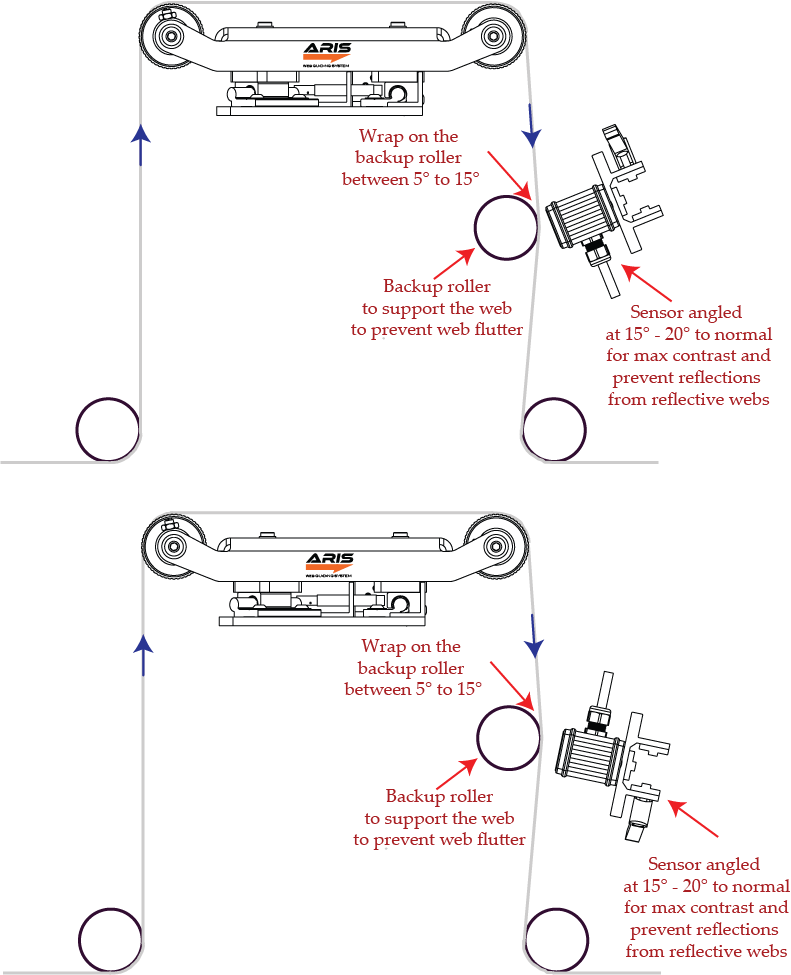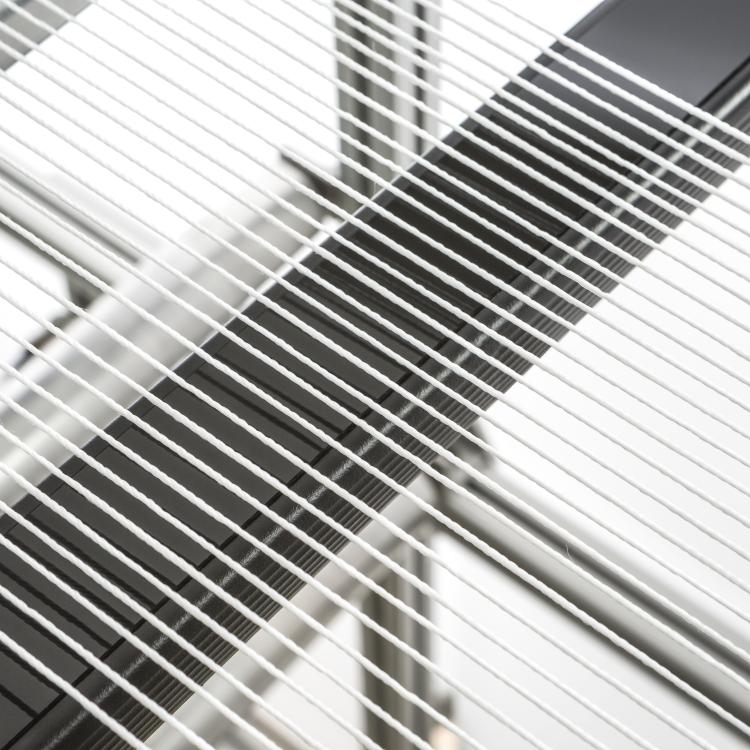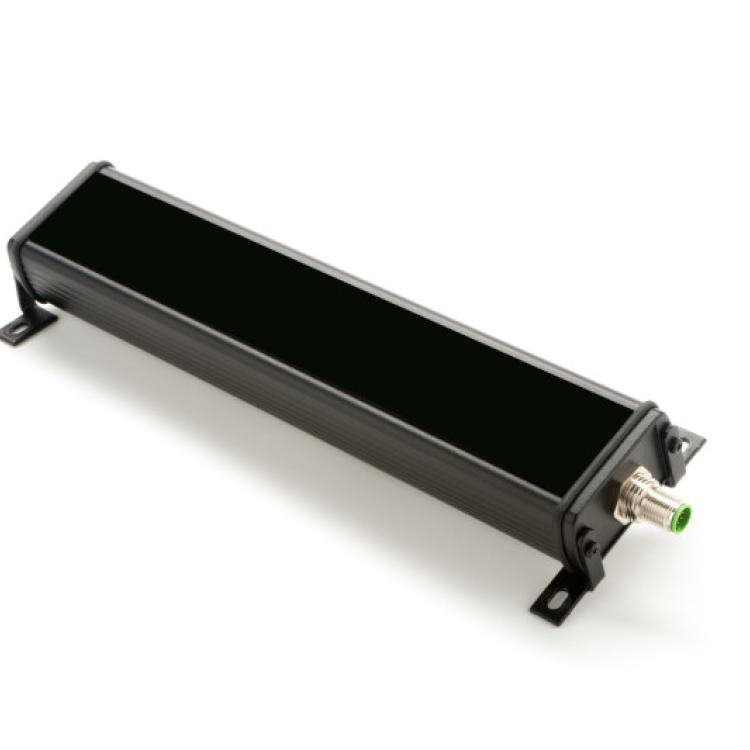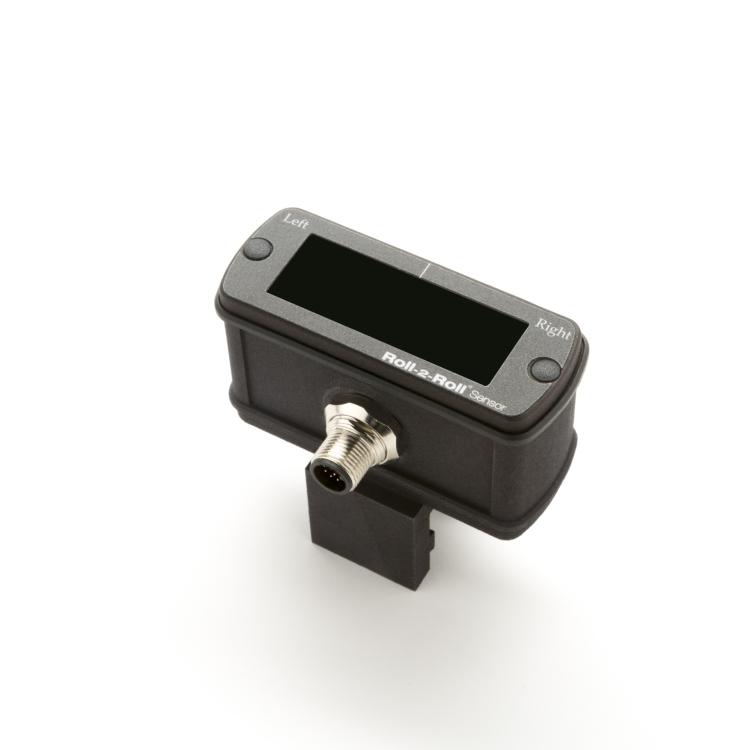One of the key steps involved in a web guiding system installation is the sensor installation. This document outlines a few key recommendations with regard to position and orientation of the sensor for different web position sensing applications.
ARIS WPS sensors are camera like sensors that work on the principle of light scattering. Hence the sensor performance is improved with proper installation that can increase light scattering while providing a good image.
Sensor Working Distance and Background for Edge Sensing Application
The sensor for edge sensing is mounted in a free span between two rollers. The distance of the sensor from the web directly affects the amount of light scattered back from the web. Closer the web is to the sensor, more light will be back scattered from the web. The ideal recommendation for the distance between the sensor and the web is 5 mm to 15 mm. Note that the sensor would still provide measurement even if the web is farther than 15 mm, especially with webs (paper and nonwovens) that can scatter a lot of light back. Since the sensor is similar to a camera, objects behind the web in the field of view of the sensor may be picked up by the sensor. It is recommended that no object (or any other web path) be at a distance of 150 mm from the sensor to increase the performance of the sensor. These recommendations are illustrated as shown below.
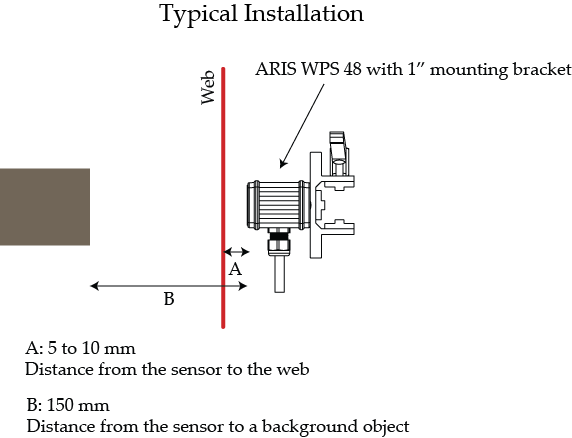
Sensor Orientation to Maximize Scattering for Edge Sensing Application
Some webs reflect more light than the amount they scatter. For example, metallic, shiny and clear webs can reflect most of the incident light away from the sensor and scatter only a tiny fraction of the light. Since for reflective webs, the angle of incident of light is the same as the angle of reflection, proper angular orientation of the sensor with respect to the web would significantly improve the amount of light coupled back into the sensor. Since the LED light source inside the sensor is at an angle, the sensor can be tilted as shown below to improve its performance. The orientation of the tilt depends on how the sensor is mounted. Hence both the possible scenarios are illustrated in the sketch below.
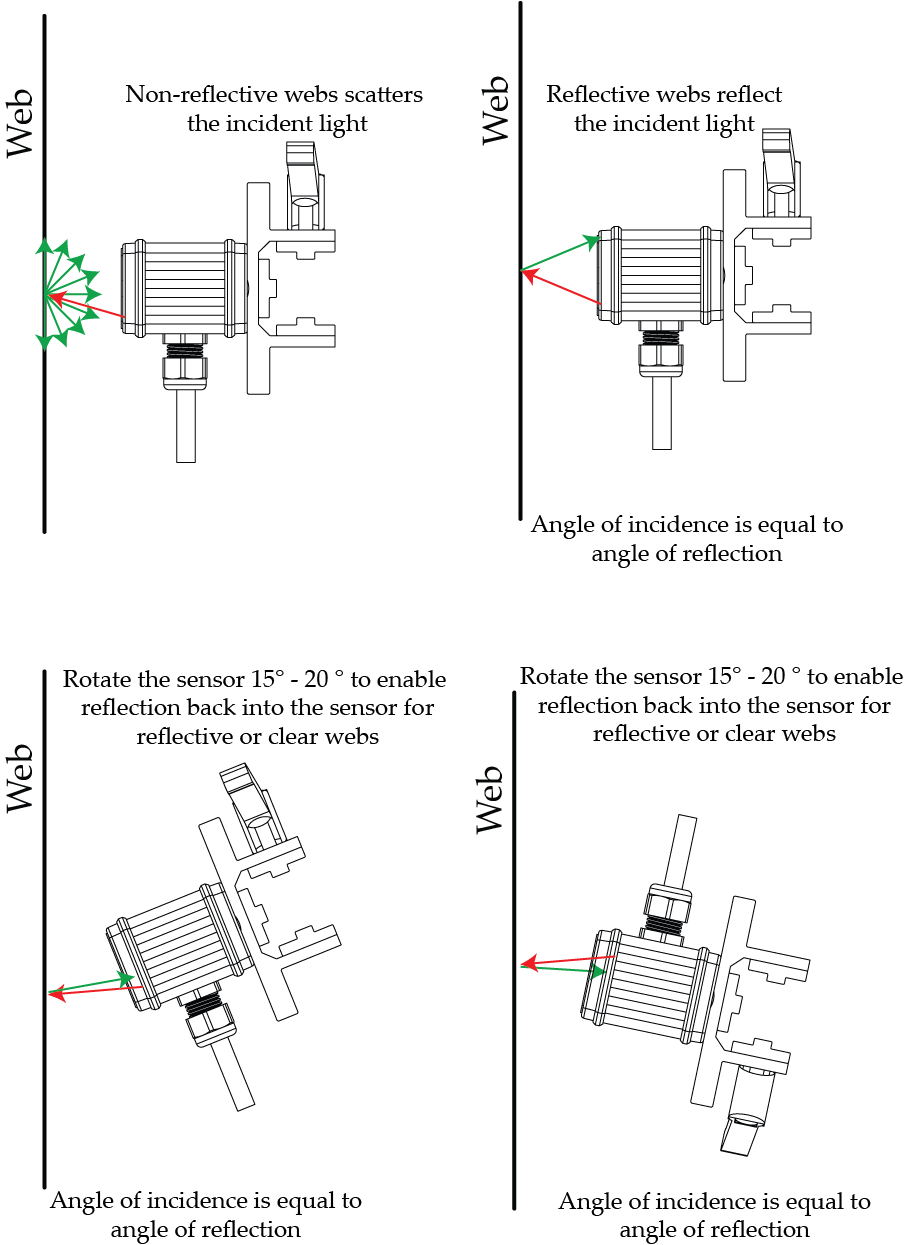
Sensor Position and Orientation to Maximize Scattering for Contrast Sensing Application
For contrast sensing applications the working distance is critical since the sensor needs to pick up even the slightest difference in contrast in the web. It is also important to prevent any plane change, since such a change could be perceived as a contrast change by the sensor. Hence for contrast sensing application the web must be supported by a backup roller and the sensor is installed such that the distance from the sensor to the web is about 5 mm. Similar to the edge sensing application, the orientation of the sensor would improve the sensor performance. The recommendation for the contrast sensing application is illustrated below.
